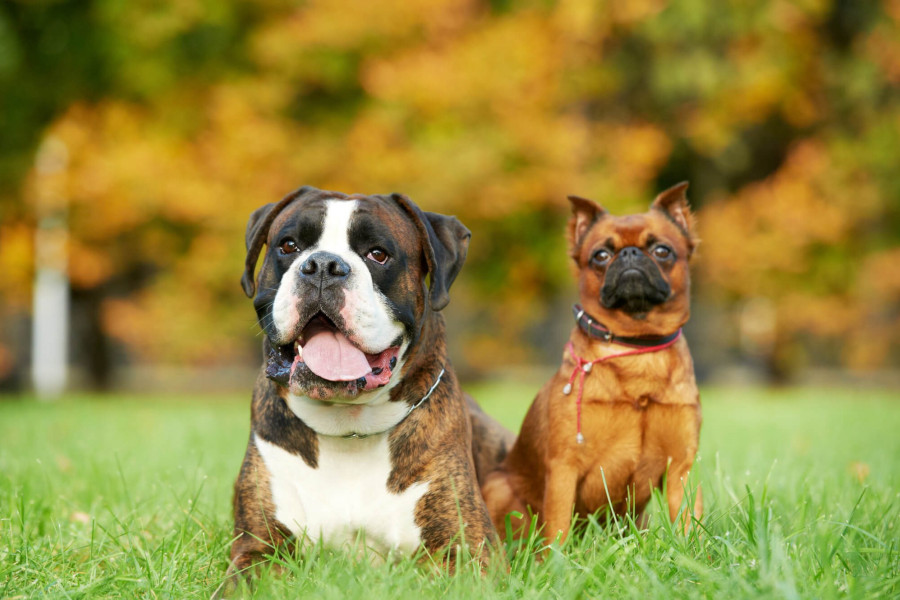What’s the Best Diet for a Diabetic Dog?

With obesity being so prevalent in the dog population – 41 percent of Australia’s dog are overweight – diabetes is a real threat. Animals that are overweight are predisposed to developing Type 1 Diabetes, which is caused by the destruction or abnormal function of the pancreas. Senior pets are also more at risk.
Outward symptoms of diabetes:
* Excessive urination
* Excessive Thirst
* Increased appetite
* Weight loss (even though they are eating more)
However, many dogs may seem fine or have very subtle signs. A blood and/or urine test is needed to diagnose the disorder, which is why routine tests for pets at risk are so important.
Living with a Dog with Diabetes
Once your dog has diabetes, there is no cure. Treatment is your only option. Your vet will prescribe insulin medication and tell you your dog needs to lose weight. The last piece is management through diet. It’s important that your diabetic dog is on the correct diet – something that will not cause blood glucose spikes.
Unfortunately, there are some differing opinions on what exactly is the best diet. Your dog’s individual health is a major factor in this – you may have to experiment a bit to find a food that works with your dog. Here are some things to look for and consider when selecting a meal plan.
Fibre
It is believed that high fibre diets can help manage obesity by curbing blood glucose levels is also helps your dog feel full longer. However, if your dog is one of the diabetics that is having trouble keeping on weight (rather than obese), high fibre can increase that weight loss. Conversely, for obese dogs it can help with weight loss. If you are looking to add fibre, you can add a fibre supplement to your dog’s regular food or switch dog food formulas if necessary.
Complex Carbohydrates
Carbohydrates are another “controversial” topic when it comes to treating the diabetic dog. Carbohydrates have a strong association with “after eating blood glucose levels” – that much is certain. This means the amount of insulin your dog needs can be affected by the amount of carbohydrates in his food, but again, it depends on each individual dog.
The most important thing is to keep the amount of carbohydrates steady – whatever that amount is – so that your insulin dosage remains correct and your dog stays stable.
Simple Carbohydrates
Simple carbohydrates create rapid spikes in blood glucose and should be avoided. This means sugar, including corn syrup and propylene glycol. Watch for these ingredients in treats and moist foods especially.
Protein
Most agree a high-protein diet is best, especially for over or under weight dogs. Diabetic dogs should never be on a low-protein diet.
Low Glycemic Foods
Low glycemic foods release glucose slowly and steady – these are the types of foods that are good for a diabetic dog. Low glycemic foods include most berries and vegetables, some whole grains and legumes.
High glycemic foods, which should be avoided, are white rice, white or wheat bread and anything with high amounts of sugar and no fiber.
Feeding Time
Another important factor is when your dog eats. Ideally she should be fed two meals, 12 hours apart. Some dogs may need a snack in between. The most important thing is to keep them on a steady schedule – this helps their blood glucose level stay stable as well.
When selecting a food for your diabetic dog, be sure to check the Ingredients and Guaranteed analysis. Our formulas are high in protein and relatively low in Carbs compared to other dry foods. Our Salmon and Turkey is high in protein and fiber so is worth considering.
Whenever you are changing a diabetic dog’s diet, do so even slower than you would a healthy dog. Monitor them carefully for any changes, especially after eating. Keep track of any affects and let your vet know so you can determine what may be causing any glucose spikes and adjust the diet and insulin accordingly. Feeding your dog correctly will allow him to live comfortably for many years.
